#sharovipteryx
Text

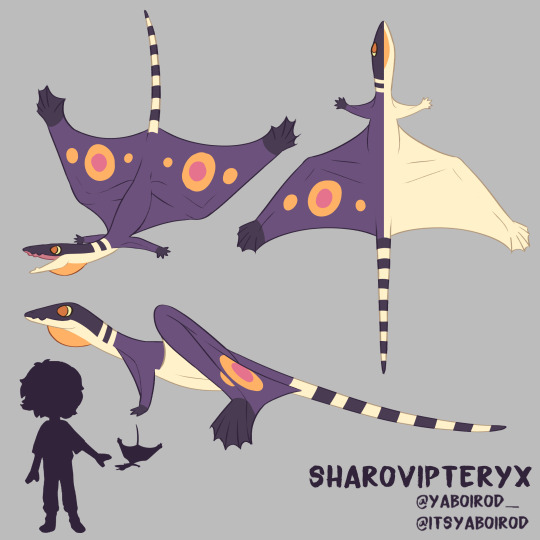
wow ignore that i havent posted here since last year. ANYWAYS !!!! somehow i forgot to post these guys alongside my Megaraptor i drew in november so 😭 here's some more fandinos for Paleo Pines !!!
"fandinos" being sorta misleading though since neither of these guys are dinosaurs lol. regardless, up first we have Tanystropheus who is infinitely ridiculous. then we have Sharovipteryx, who is equally infinitely ridiculous. both of these guys lived in the Triassic - and surprisingly, are likely related!
#paleo pines#rodarts#paleoart#paleoblr#paleontology#dinosaurs#tanystropheus#sharovipteryx#protorosaur#archosauromorpha#I LOVE PALEO PINES RAAAHH!!!!!!
246 notes
·
View notes
Text
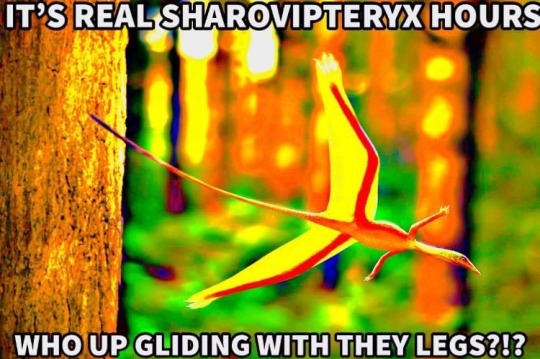
274 notes
·
View notes
Text

Skeletal reconstruction of Sharovipteryx mirabilis, a highly unusual gliding reptile hailing from the late Triassic of Kazakhstan (225 mya)
42 notes
·
View notes
Text
Round 4 Match 5
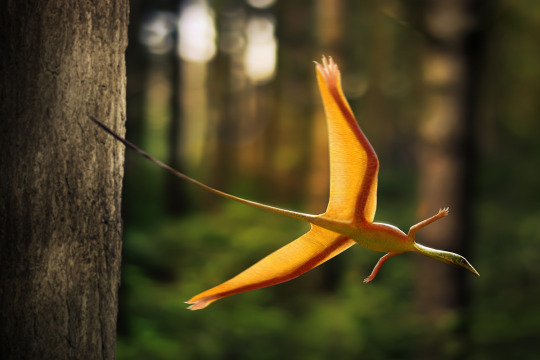
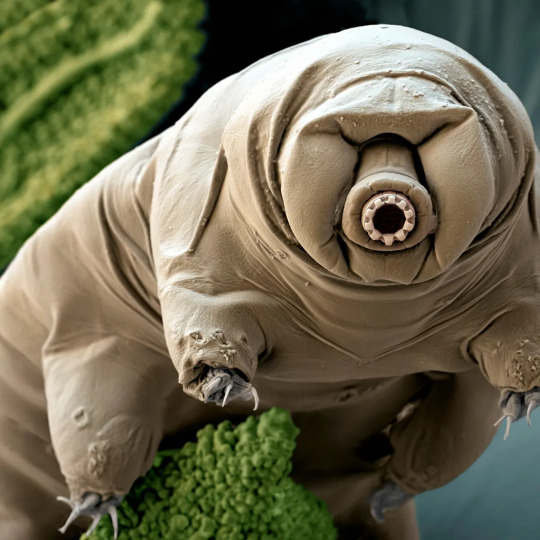
Sharovipteryx: "the sharviopteryx was really out there like. hmmm I'd like to glide but arm wings are overrated. like can you fucking imagine if birds had normal ass arms and hugelarge leg wings. the sharovipteryx is a haunting vision of what Could Have Been"
Tardigrade: "look at that fucker. certified freak 7 days a week"
80 notes
·
View notes
Text
question for those who probably know more than me:
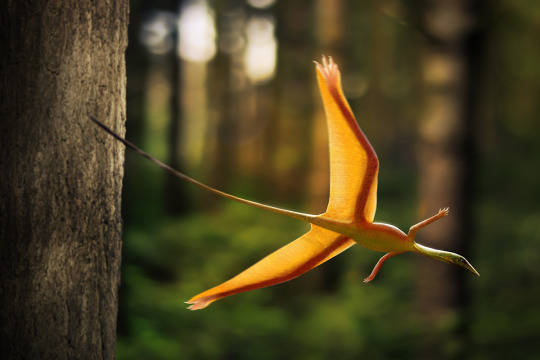
how exactly do we know that Sharovipteryx glided with its legs? like, i can't think of any other animal that flies or glides with exclusively its back legs
was there, like, imprints for gliding membrane? it seems like it'd just be really long leaping legs, like a reptilian frog
143 notes
·
View notes
Note
What are your top (at least 3) prehistoric weird guys? One of mine is Anomalocaris (Cool Shrimp)
First three that come to mind are Sharovipteryx, Opabinia, and - truthfully - Deinocheirus
#dinosaurs#paleontology#prehistoric life#reptiles#invertebrates#paleontololgist ama#opabinia#sharovipteryx#deinocheirus#anomalocaris
23 notes
·
View notes
Note
burning question. do you have a favorite dinosaur/prehistoric animal
I just....
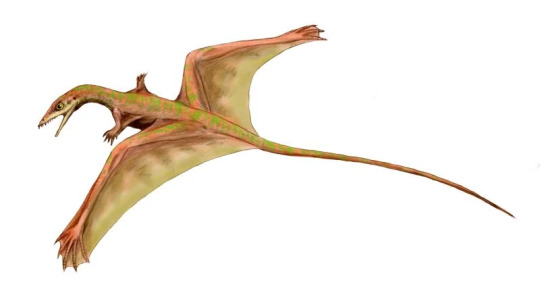
21 notes
·
View notes
Text
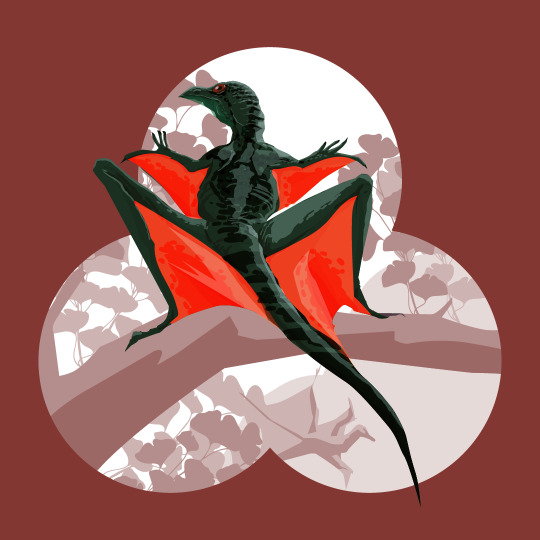
No dinosaurs #dinovember2022 day 23: Sharovipteryx
#sharovipteryx#dinovember2022#protosauria#vector#illustration#paleoillustration#paleoart#vectorart#vectorillustration#adobeillustrator#dinosaurs#art
10 notes
·
View notes
Text
Life in the Middle Triassic
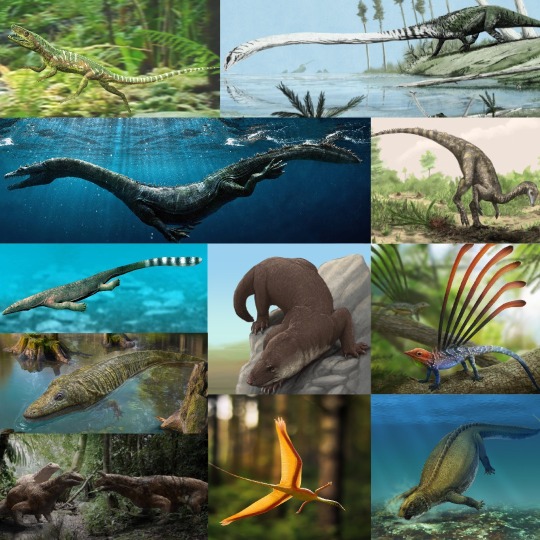
(first row: Euparkeria, Tanystropheus; second row: Nothosaurus, Nyasasaurus; third row: Thalattosaurus (top), Mastodonsaurus (bottom), Cynognathus, Longisquama; fourth row: Shringasaurus, Sharovipteryx, Placodus)
Art by:
Tanystropheus, Nyasasaurus - Mark Witton
Thalattosaurus - Nobu Tamura
Nothosaurus - Johnson Mortimer
Mastodonsaurus - Vladislav Egorov
Sharovipteryx, Longisquama - Julio Lacerda
Shringasaurus - Ntvtiko
Cynognathus - Gabriel Ugueto
Euparkeria - Taenadoman
Placodus - Sergey Krasovsky
The Triassic is a fantastic time if you’re interested in weird creatures and it’s a shame that it often gets overlooked in favor of the more dinosaur-rich Jurassic and Cretaceous. The main reason for the abundance of Triassic weirdos is that the time period was bookended on both sides by mass extinctions: The end Permian mass extinction had just left the planet empty, with lots of opportunities for evolution to go crazy as the the few survivors refilled niches. At the end of the Triassic however (Spoiler alert), another mass extinction wiped out most of the newly established forms, which is why they look so foreign and strange to us - bizarre anomalies that only existed for a brief period of time and didn‘t leave any successors to help us understand them better.
One of those weirdos is leg-winged Sharovipteryx. Because yes, while every other vertebrate on the planet decided that arms are pretty good for flying, Sharovipteryx wanted to not be like other girls and used its legs instead. While it wasn‘t capable of powered flight (only birds, bats and pterosaurs ever accomplished that), it was probably a decent glider (Dyke, 2006).
From the same fossil beds as Sharovipteryx comes another unusual critter: Longisquama. At first glance it might look like your typical little lizard - if it wasn‘t for its back being covered with those long …scales? Feathers? Maybe just plant leaves that somehow fossilzed next to the animal? We really are not sure what exactly is going on with the back of this little guy. Although it seems like the most recent idea is, that those appendages are not feathers in the sense that birds have them, but that both feathers and Longisquama‘s structures might be homologous, meaning that they come from the same origin (Buchwitz, 2012). As for what were they doing with the structures? Probably sexual display, which is the paleontology version of saying “we‘re not sure, but unless you‘ve got a better idea, we‘re sticking with this one“.
(Oh, and btw both Longisquama and Sharovipteryx are prime topics for David Peters, self-proclaimed paleontologist that apparently loves to spread misinformation and seems to have beef with the entire paleo-community - so be cautious when you see something written by him. Man, I really don‘t wanna be involved with paleo drama. I wasn‘t even aware there was paleo drama)
The placement of both Sharovipteryx as well as Longuisquama on the family tree is pretty uncertain, but most likely they fall somewhere around the base of the Archosaur lineage, a group that you will hear a lot about in the future, as it includes the flying pterosaurs, everything related to crocodiles, and of course the dinosaurs. The earliest of those you might see around this time in the form of medium-sized average-looking bipeds like Nyasasaurus.
Also settled around the base of the archosaur line is long necked Tanystropheus (although some of its fossils were believed to be flying pterosaurs for a long time because its neck vertebrae were mistaken for wing finger bones). With a length of around 5 m it was pretty big for the time. It most likely lived a semi-aquatic lifestyle, staying on the shores while it used it oversized neck to catch fish from the water.
During the Triassic we see quite a few reptile groups going for more aquatic lifestyle. While some, like the Thalattosaurs were relatively short-lived, others dominated for most of the age of reptiles. One of the most prominent groups are the Sauropterygia. The name (which translates to “lizard flippers“) might not sound too familiar, but this is the group that will later contain the Loch-Ness-monster looking plesiosaurs and their shorter-necked cousins, the pliosaurs. In the early days of this group the animals weren‘t quite as well adapted for the waters yet, but you can already see were the journey is going. Nothosaurus for examples, lived probably similar to seals, while Placodus was more terrestrial and only spent time in the water to forage for food.
Most of this was all very reptile-focused. That is because by now the synapsids, those early cousins of our own lineage, that roamed the world as giant beasts during the permian, had lost their positions at the top of the food chain. For the most part, they were now constrained to small burrows and dark nights, to the shadows of much larger creatures. Their story does of course not end here, but for the next 170 million years our planet truely was a planet of reptiles.
1 note
·
View note
Text
Sharovipteryx

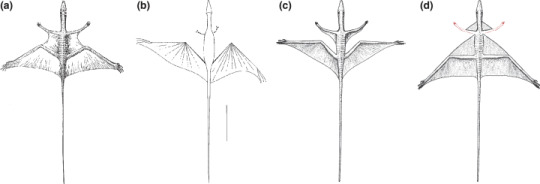



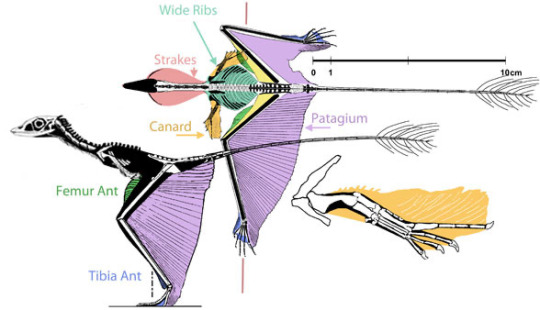
1 note
·
View note
Text
Spectember/Spectober 2023 #09: Things With Wings
(Apologies for the abrupt absence – I'm okay, just having everything break down at once. This is fine.)
So— back to the speculative evolution request list!
@thebigdeepcheatsy requested a "cactus-dwelling/germinating evolution of introduced rosy-faced lovebirds":
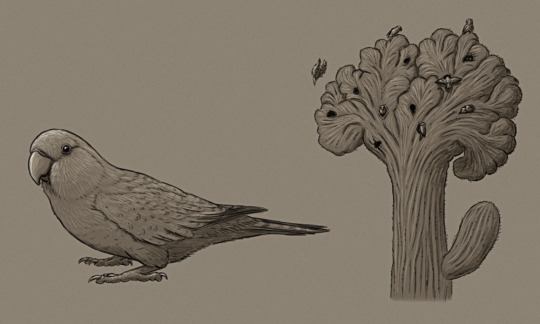
While Agapornis cheatsyi is still quite physically similar to its introduced ancestors, this lovebird has developed a close symbiotic relationship with the cactus Carnegiea ornipolis, a descendant of the modern saguaro.
Naturally fasciated, this cactus grows a splaying fan-like crown which the lovebirds excavate their shallow nest burrows into. Feeding on the cactus' fruit in early summer, the lovebirds then disperse the seeds via their droppings – a process that significantly improves propagation chances, both due to the birds commonly foraging and defecating around suitable nurse plants and the passage through their gut speeding up germination.
———
Someone calling themself "LB" asked for some "flying afrotherians":

Elbeitandraka venenifer is a descendant of tree-climbing Malagasy tenrecs that developed gliding membranes – and its lineage is now just about achieving true powered flight.
About 25cm long (~10"), its proportionally short broad wings require it to fly very fast to generate enough lift for its weight. It mostly only actively flies when traveling between roosts and feeding sites (or when escaping from threats), alternating between gliding to save energy and flapping to recover altitude.
It's an opportunistic omnivore, crawling around in the tree canopy foraging for vegetation, fruits, fungi, invertebrates, and the occasional smaller vertebrate, using its flexible sengi-like nose to probe around in crevices.
Much like modern common tenrecs it's capable of hibernating for months at a time through periods of scarce food availability. It also accumulates alkaloid toxins in its body from its arthropod prey, advertising its unpalatability to predators with bold contrasting warning coloration on its wing membranes.
———
And here's a combination of a couple of anonymous requests for both "flying heterodontosaurs" and "dragons with hind leg wings, a la sharovipteryx":
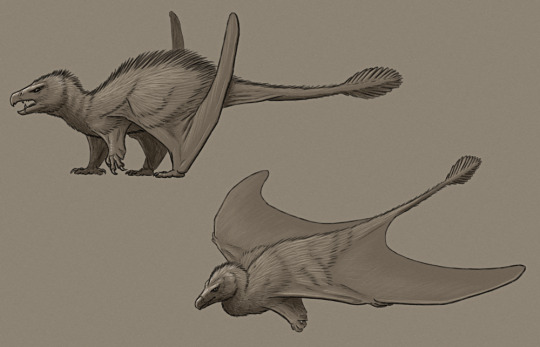
Inversodraco rapax is a highly specialized Jurassic descendant of heterodontosaurids that took to climbing and gliding, developing delta-wing-like membranes on their hindlimbs convergently similar to those of the earlier sharovipterygids.
Around 75cm long (~2'6"), it has unusually flexible hip joints for a dinosaur, able to splay its legs out to the sides to deploy wings supported by an elongated outer toe on each foot. Its arms form small forewings for stability, and its long tail ends in a vane of stiffened feathers that aid in steering.
Unlike its herbivorous-to-omnivorous ancestors it's primarily a carnivore, swooping down onto small prey and grabbing it with its talon-like forelimbs.
#spectember#spectober#spectember 2023#speculative evolution#lovebird#parrot#bird#saguaro#cactus#plant#tenrec#afrotheria#mammal#heterodontosaurid#ornithischia#dinosaur#art#science illustration#look if any mammal is going to copy bats' homework it's going to be tenrecs
266 notes
·
View notes
Text
the wind ancient should be a sharovipteryx.
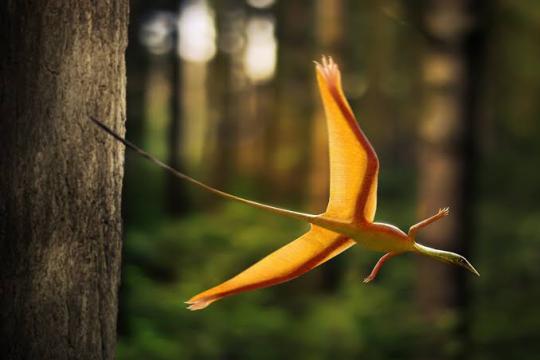

38 notes
·
View notes
Text

Sharovipteryx
Sharovipteryx was a bizarre reptile known from Triassic rocks in Kyrgyzstan. It had incredibly long legs that bore wing membranes that allowed Sharovipteryx to glide from branch to branch.
Illustration by Corbin Rainbolt
#paleoart#sciart#triassic#science#nature#paleontology#geology#fossil#fossils#evolution#art#illustration#illustragram#paleostock
459 notes
·
View notes
Text
Also I decided what the centaurs of Asterism Borealis are derived from...
And it's kangaroos...
I mean, it fits, I guess? And not as cursed as the dragons being derived from a sharovipteryx-like non-avian dinosaur-
8 notes
·
View notes
Text
Round 1 Match 36


Giraffe Weevil: "Just GOOGLE this thing, look at that littl guy's neck........ I can't find any information on why they have such long necks but apparently the males have bigger necks than the females"
Sharivopteryx: "the sharviopteryx was really out there like. hmmm I'd like to glide but arm wings are overrated. like can you fucking imagine if birds had normal ass arms and hugelarge leg wings. the sharovipteryx is a haunting vision of what Could Have Been"
60 notes
·
View notes
Text
Ozimek volans, a Polish reptile that’s also a close relative of Sharovipteryx.

With Hatsune Miku for scale:

20 notes
·
View notes